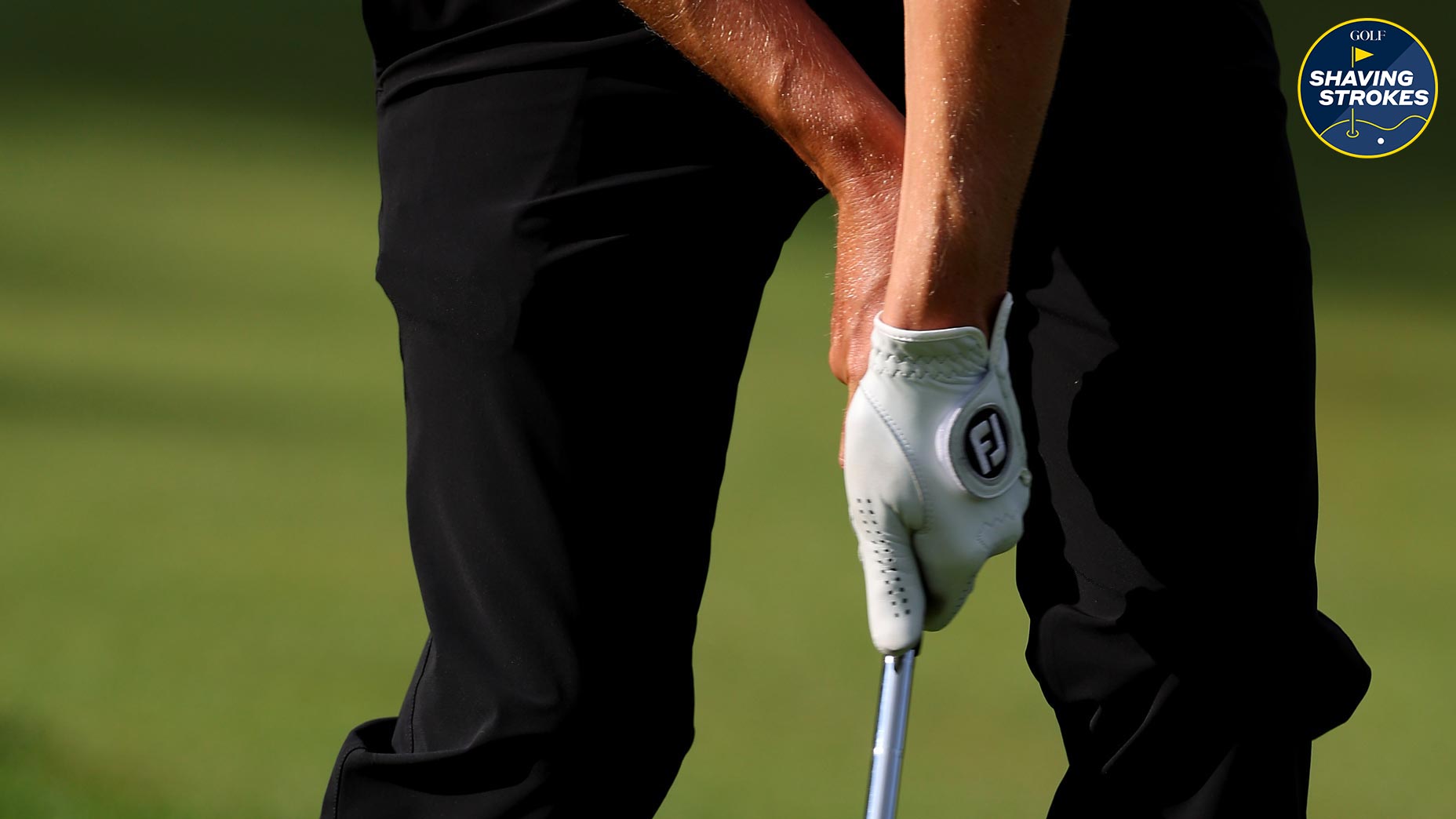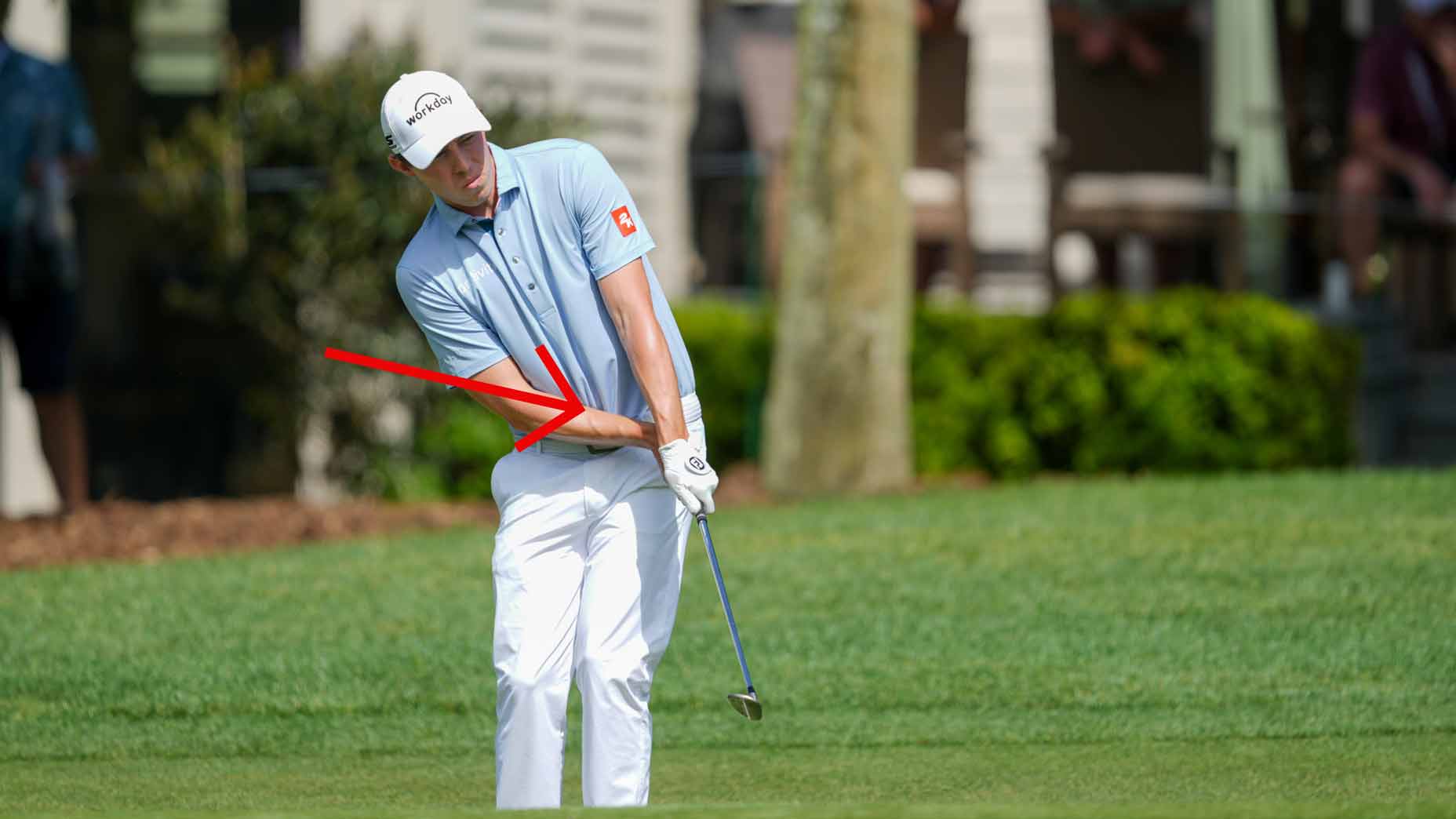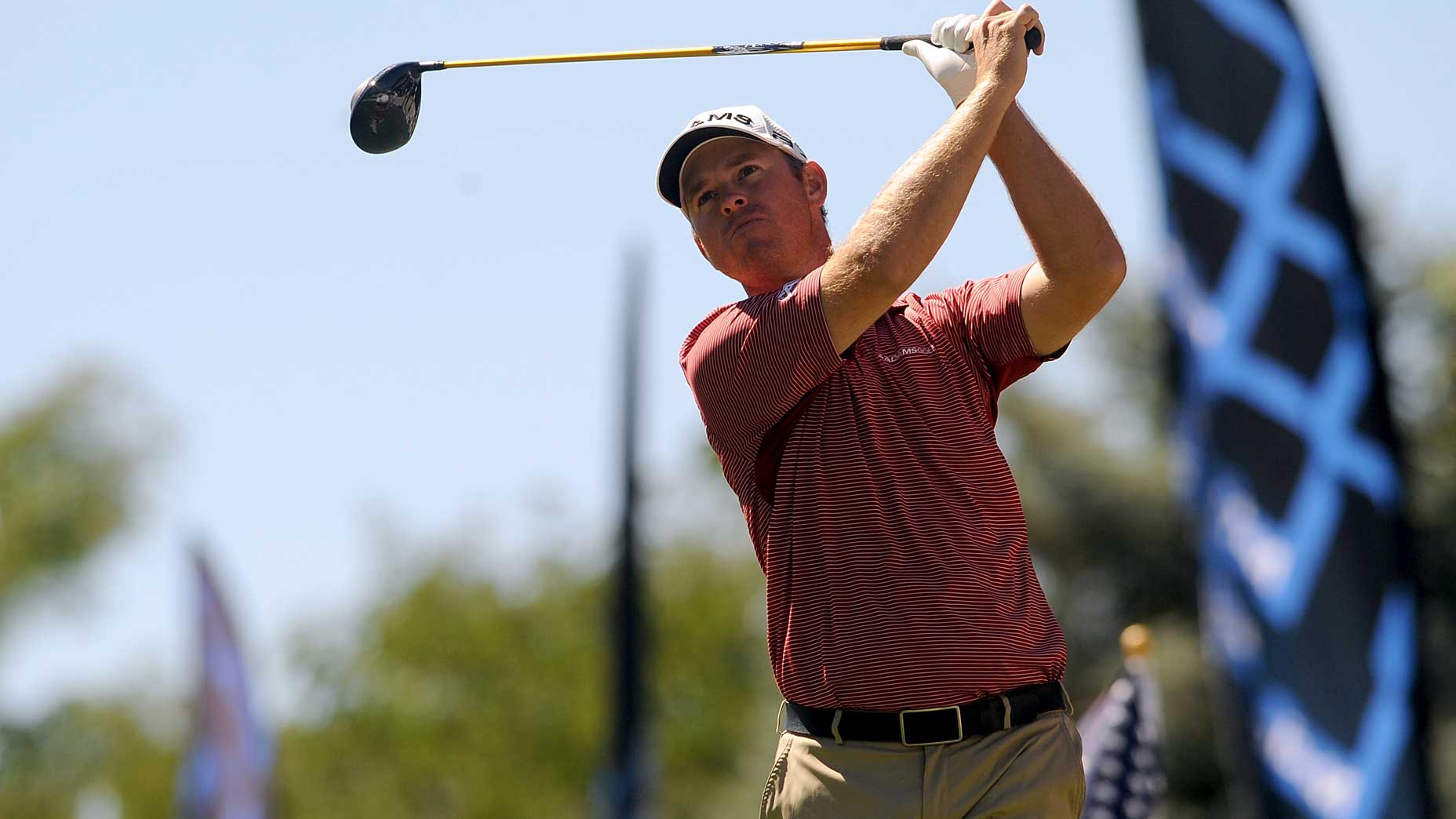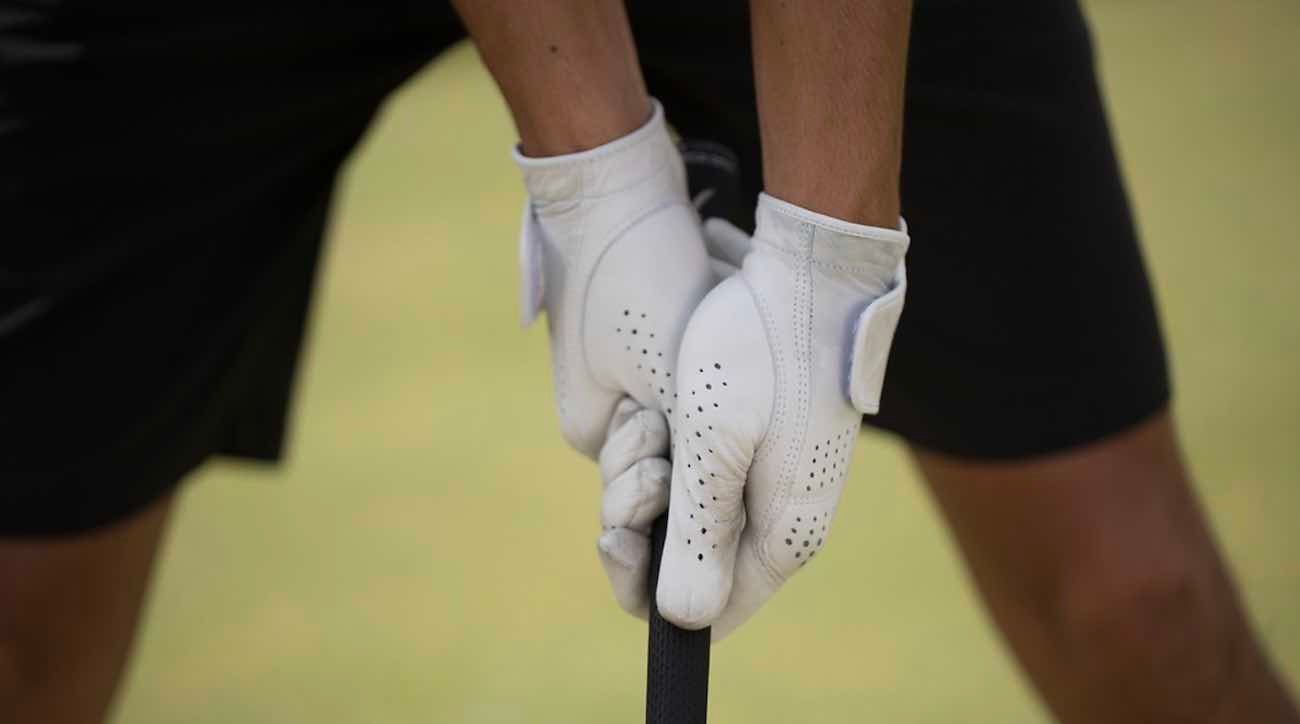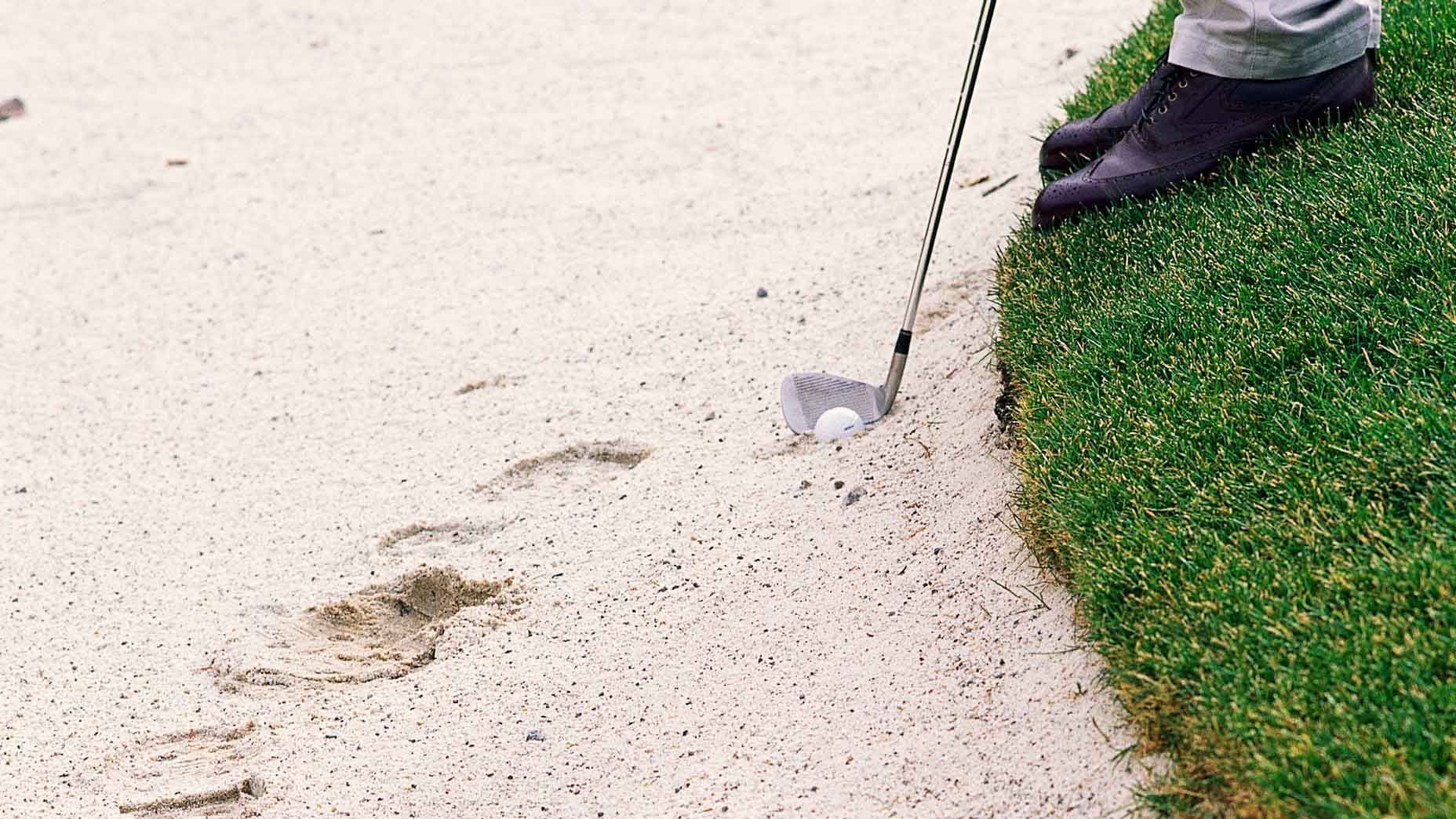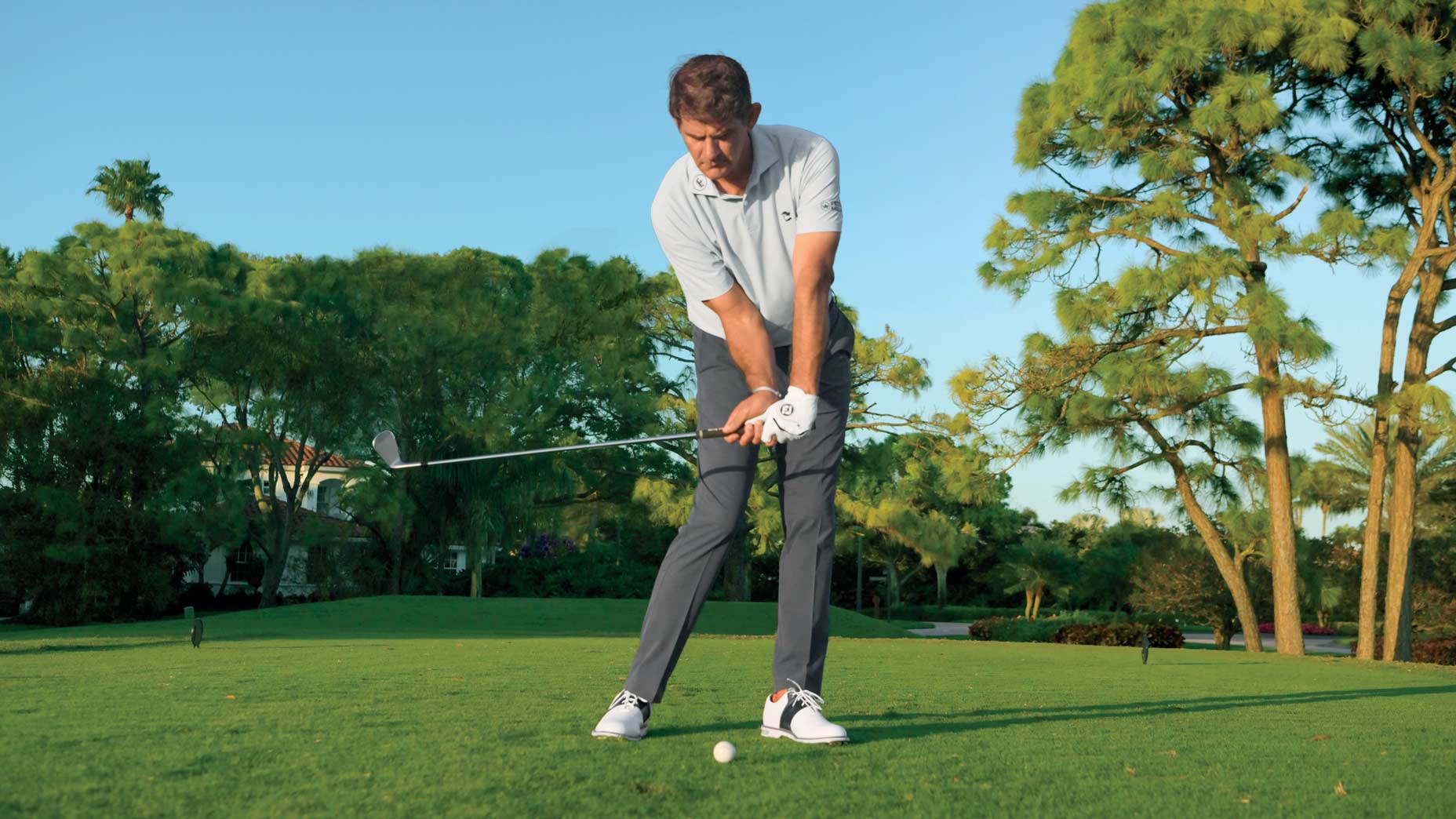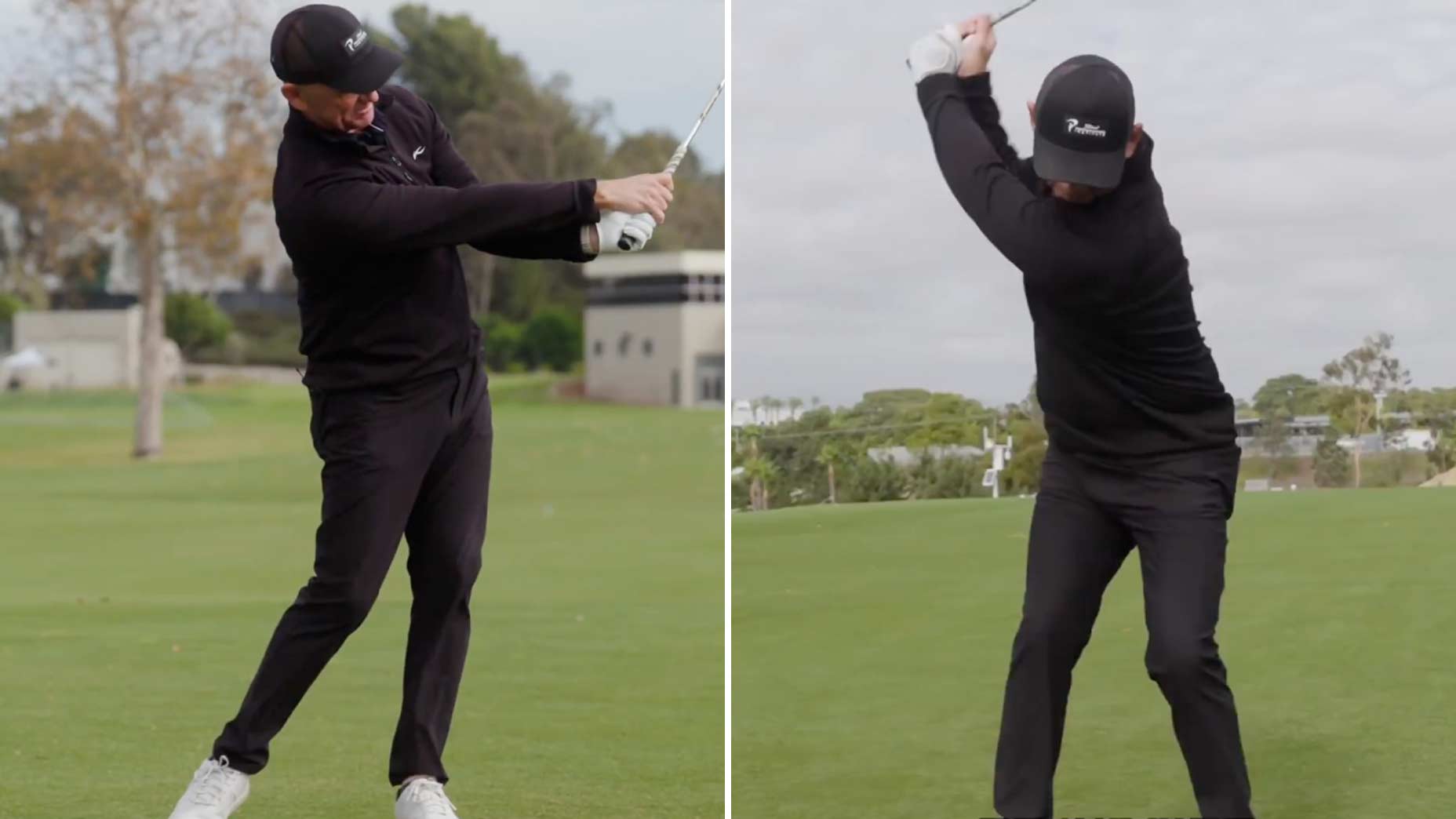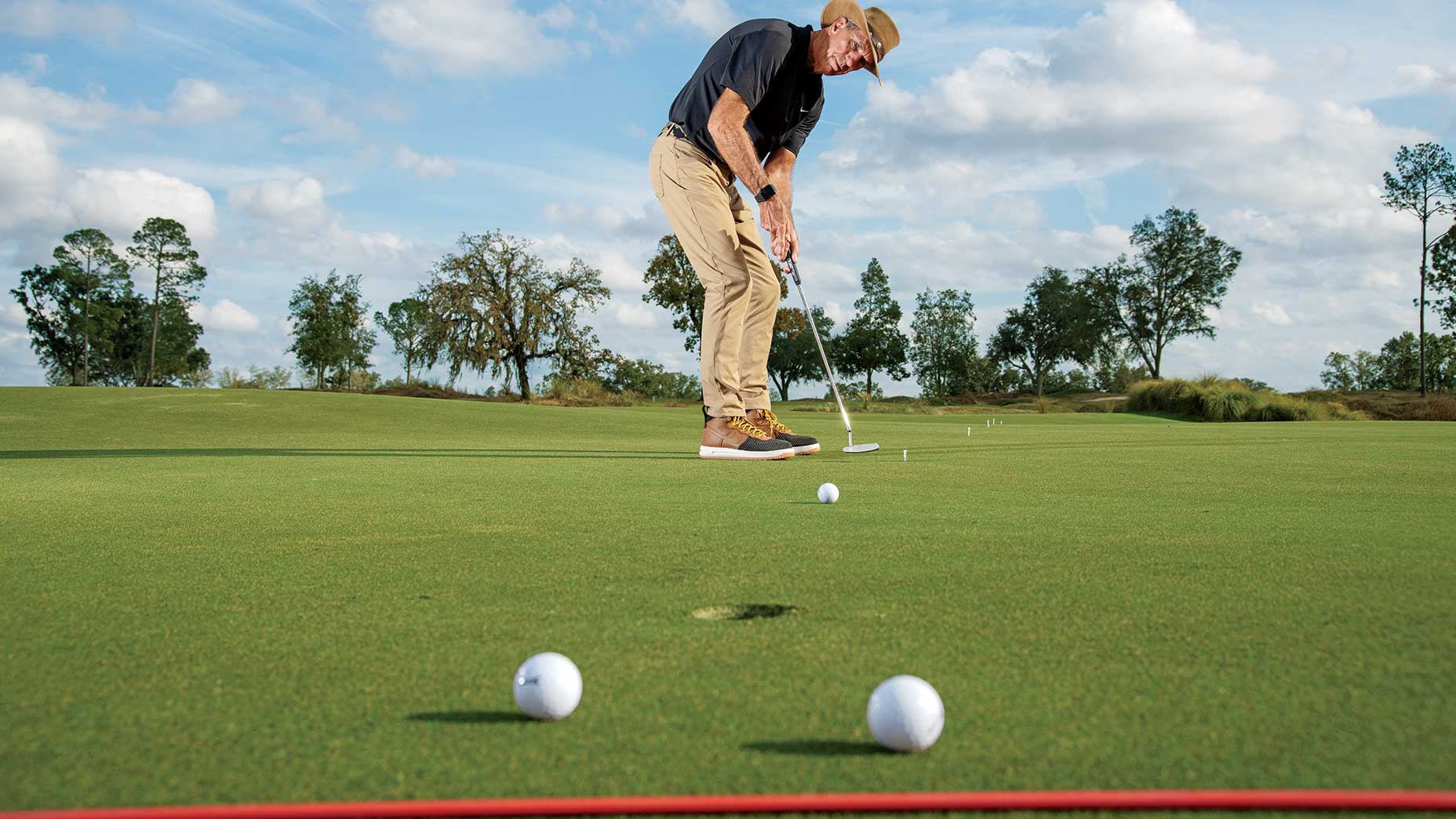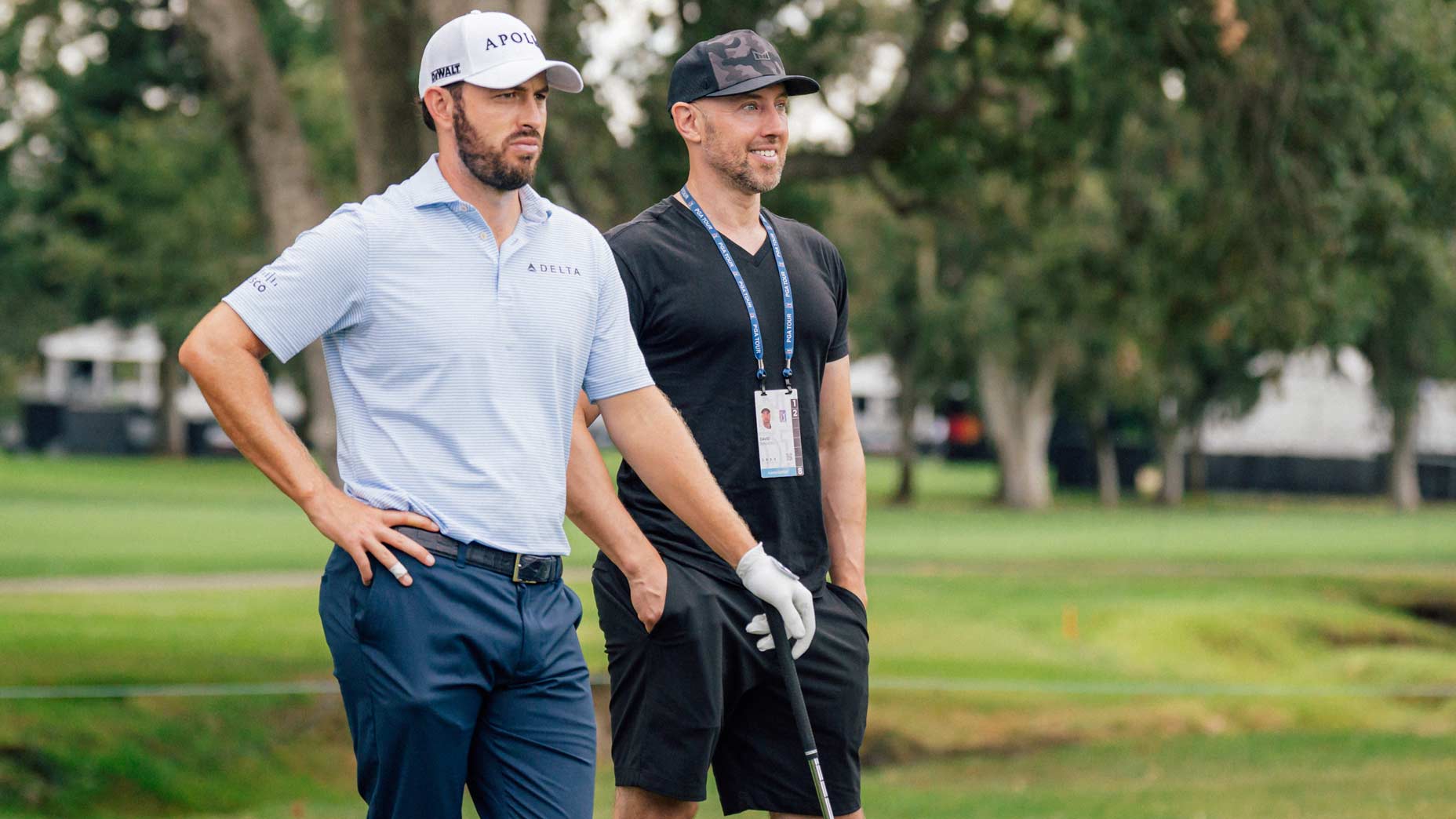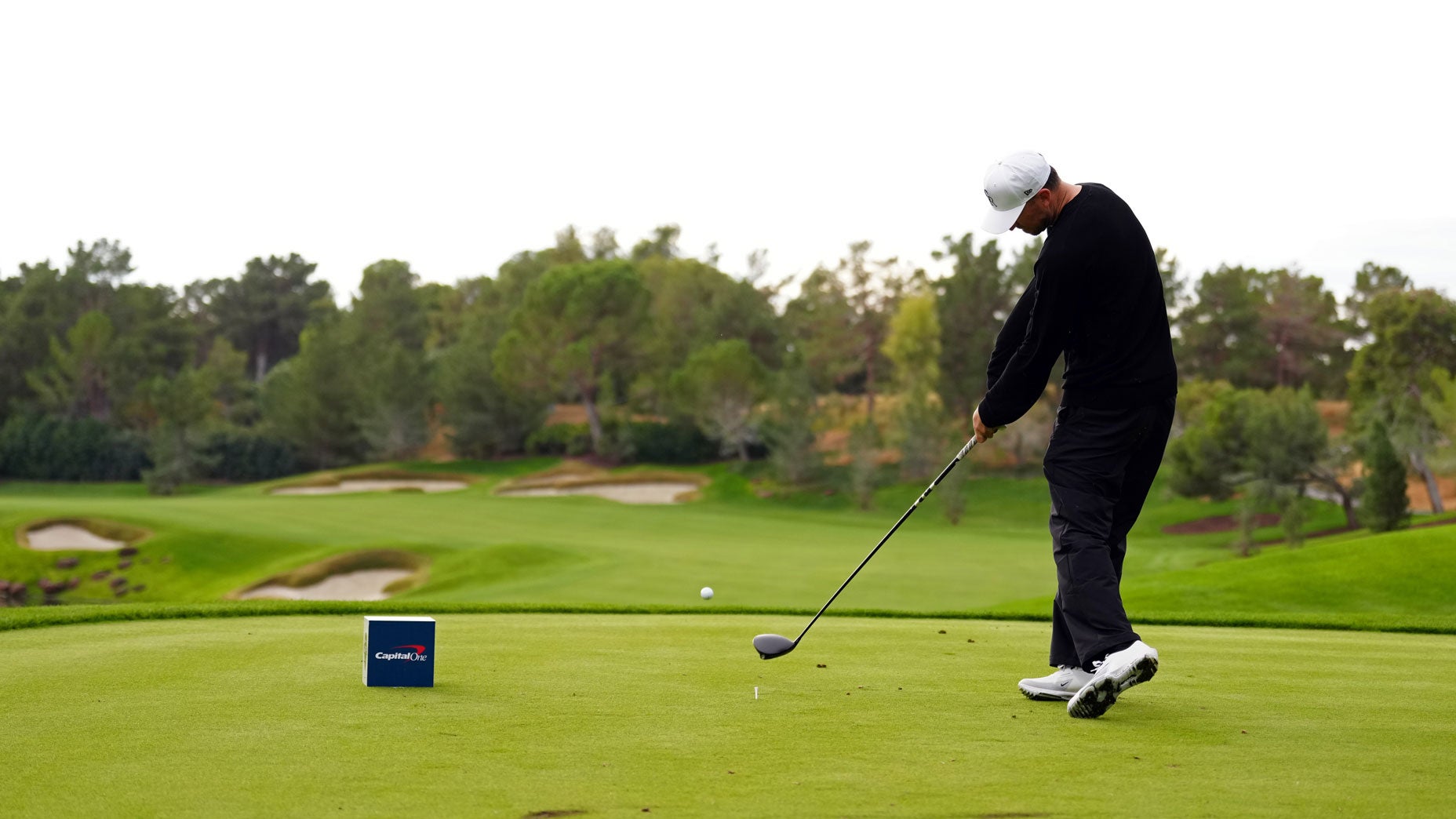The beauty of golf is that no two players are the exact same, which is why we tend to use different techniques (no matter how unorthodox) to get as comfortable as possible while swinging the club. And this tinkering starts with the grip.
Although you might think about different putting grips as the place players experiment the most, another area that’s worth exploring is the cross-handed chipping grip, which isn’t extremely popular but can be extremely effective in improving your short game.
So is it really all that it’s cracked up to be?
What shots does Matt Fitzpatrick hit cross-handed — and why?By: Nick Dimengo
To find out, I asked GOLF Top 100 Teacher Joey Wuertemberger to give me a full guide on the benefits of cross-handed chipping. His biggest answer? More consistent clubface control to help make better contact.
But how does this funky grip work, and is it something you should try for yourself? Wuertemberger explains below, and encourages any player struggling with his short game to consider making the switch.
The benefits of cross-handed chipping
“When you watch a golf event on TV, you’ve probably heard the commentators praise a player for being ‘creative’ in the short game,” Wuertemberger explains. “In most cases, they’re referring to the player’s ability to see and adjust to challenging lies, and then to execute the precise shot required to knock it close to the pin.”
So what helps the pros pull off those pressure packed up-and-downs that so many amateurs have a hard time with? Wuertemberger says it all begins with having better clubface control — which starts in the hands.
How this cross-handed golfer’s legacy remains in pro golfBy: Zephyr Melton
“Pros use more of a body-driven motion with reduced tension in their arms, helping them ‘quiet’ their hands to better control the clubhead path through impact in the short game,” he adds. “This improved contact allows them to execute the shot they envisioned before ever addressing the ball.”
But just because a pro’s a pro doesn’t mean the mid-handicapper reading this can’t steal some of their secrets to increase their up-and-down percentages. And one way, albeit unconventional, is to try cross-handed chipping, according to Wuertemberger.
“Cross-handed chipping promotes the use of your larger muscles (like the shoulders and upper torso),” he explains. “By simply swapping your hands on the grip (with the left hand low for righties, and the right hand low for lefties), you gain a new sense of control and stability — which naturally helps reduce the tension in the wrists and forearms to allow for a smoother and more relaxed swing. This encourages a straighter, more controlled club path — a must when you’re seeking clean contact and more accurate shots.”
Wuertemberger says that this new hand stability will free your mind and allow you to focus more on the proper weight transfer and shoulder rotation — instead of trying to compensate for flaws in the downswing.
“Too many amateurs either ‘break the wrists’ or ‘flip the club’ to save the shot at the last moment while chipping,” he says. “But there’s no consistency when doing these small hand and wrist adjustments, which is why you probably blade or chunk your wedges more frequently than you’d prefer.”
How to practice cross-handed chipping
OK, so now that you understand why cross-handed chipping can help your short game, Wuertemberger explains how to actually practice the unique technique — which simply starts with using your favorite wedge on the range to help get the feel for the switch.
“Begin by placing the lead hand below the trail hand on the club, ensuring both hands feel comfortable. The lead hand should be firm but not overly tight, which helps allow for a smooth motion,” he instructs. “Next, shift 60 percent of your weight onto the lead foot and position the ball just slightly back in your stance to promote a descending strike.
“When swinging, use your shoulders rather than your hands. I suggest taking some small practice swing at a slow pace to feel how the cross-handed grip quiets your hands (and prevents excessive wrist movement) throughout the swing.”
Could practicing cross-handed actually help your golf swing?By: Mark Immelman
After taking some practice swings, Wuertemberger reminds players to use solid fundamentals to make good contact.
“Notice where the clubhead’s striking the ground and adjust the ball position accordingly, since you want contact with the ball first and not the ground behind it,” he adds. “Now hit 6-to-8 standard chip shots, trying to land the ball a few different places on the green to see how far they run out. Once you’re comfortable, try incorporating more variety, such as a bump-and-run or some short pitches to increase your creativity around the green.”
While cross-handed chipping may seem unusual, it can be a game-changer for the player who feels stuck with an inconsistent short game. So if you experience bad results while chipping and tend to chunk or thin chip shots, try making the switch to the cross-handed grip, which can lead to better contact, added clubface control, reduced wrist movement, and more positive results.
